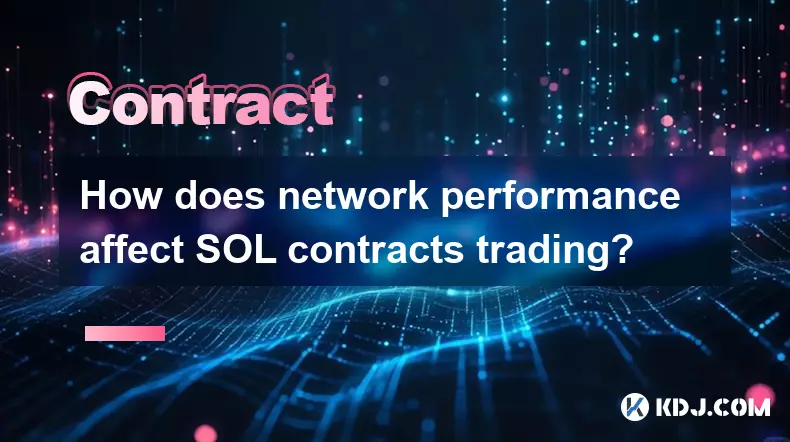-
 bitcoin
bitcoin $122659.385674 USD
0.52% -
 ethereum
ethereum $4484.113342 USD
-0.09% -
 bnb
bnb $1304.229256 USD
-0.85% -
 tether
tether $1.000204 USD
-0.03% -
 xrp
xrp $2.860636 USD
-0.51% -
 solana
solana $227.288799 USD
2.36% -
 usd-coin
usd-coin $0.999805 USD
0.01% -
 dogecoin
dogecoin $0.252837 USD
1.18% -
 tron
tron $0.341149 USD
1.12% -
 cardano
cardano $0.830507 USD
0.33% -
 hyperliquid
hyperliquid $45.792319 USD
0.04% -
 chainlink
chainlink $22.422164 USD
1.55% -
 ethena-usde
ethena-usde $1.000283 USD
0.01% -
 sui
sui $3.511389 USD
0.83% -
 stellar
stellar $0.385276 USD
-0.44%
How should I choose leverage for Ethereum futures?
Leverage in Ethereum futures amplifies both gains and risks, with optimal levels depending on strategy, volatility, and risk tolerance—ranging from 2x for beginners to over 100x on some exchanges.
Sep 24, 2025 at 03:54 pm

Understanding Leverage in Ethereum Futures Trading
1. Leverage allows traders to control a larger position with a smaller amount of capital. In Ethereum futures, leverage can range from 2x to over 100x depending on the exchange. Higher leverage increases both potential gains and losses, making it crucial to understand how much risk you're taking on.
2. Each leverage level multiplies your exposure to price movements. For example, with 10x leverage, a 1% move in ETH price results in a 10% gain or loss on your margin. This sensitivity means small market fluctuations can trigger significant outcomes.
3. Exchanges often impose different margin requirements based on the leverage used. Higher leverage usually demands stricter maintenance margins, increasing the chance of liquidation during volatile periods.
4. Market conditions heavily influence the effectiveness of chosen leverage. During low volatility, higher leverage might be manageable, but in fast-moving markets, even moderate leverage can lead to rapid account depletion.
5. Risk tolerance plays a central role in selecting appropriate leverage. Aggressive traders may opt for higher multiples, while conservative participants typically stick to lower levels to preserve capital over time.
Choosing the Right Leverage Based on Strategy
1. Day traders who open and close positions within hours may use 10x to 25x leverage to amplify short-term moves. These strategies rely on tight stop-loss orders and constant monitoring to avoid large drawdowns.
2. Swing traders holding positions for days or weeks often prefer 5x to 10x leverage. This range balances exposure with reduced sensitivity to intraday noise, helping avoid premature liquidations due to temporary price swings.
3. Scalpers executing multiple trades per day might use 20x or higher leverage on small position sizes. Their focus is on capturing minor price discrepancies, requiring precision and quick exits rather than long-term exposure.
4. Hedgers using futures to offset spot holdings generally choose 1x to 5x leverage. Their goal isn't profit maximization but risk mitigation, so minimal amplification aligns better with their objectives.
5. New traders are advised to start with 2x to 5x leverage to build experience without excessive risk. Learning how funding rates, mark prices, and liquidation mechanics work under real conditions is more valuable than chasing high returns early on.
Factors Influencing Leverage Decisions
1. Volatility spikes in Ethereum’s price often coincide with macroeconomic news, regulatory updates, or major network upgrades. During such times, reducing leverage helps withstand unexpected swings that could otherwise trigger automatic liquidations.
2. Funding rates in perpetual futures contracts change with market sentiment. High positive funding indicates long dominance, which may signal overcrowded bullishness. In such environments, aggressive leverage on long positions becomes riskier due to potential reversals.
3. Exchange-specific features like isolated vs. cross-margin modes affect leverage safety. Isolated margin limits losses to a defined amount, allowing more controlled use of high leverage. Cross-margin uses the entire account balance, increasing systemic risk when leverage exceeds 10x.
4. Position size interacts directly with leverage. A large position at 5x leverage can pose greater risk than a small one at 50x. Proper position sizing relative to total capital ensures that no single trade jeopardizes the portfolio.
5. Historical backtesting shows that accounts using consistent, moderate leverage (below 10x) tend to survive longer during prolonged bear markets. Overleveraged accounts, even with correct directional calls, frequently fail due to timing mismatches and volatility shocks.
Frequently Asked Questions
What happens if my leveraged Ethereum futures position gets liquidated?When your margin falls below the maintenance threshold, the exchange automatically closes your position to prevent further losses. This results in losing the initial margin allocated to that trade, and some platforms may charge additional fees depending on their liquidation model.
Can I adjust leverage after opening a futures position?On most exchanges, you can modify leverage for open positions only if you're using isolated margin mode. Increasing leverage reduces your buffer against price movement, while decreasing it provides more room for fluctuation. Changes aren't permitted in cross-margin mode once the trade is active.
Does higher leverage affect funding rate payments?The funding rate applies to the nominal value of your position, not the leverage itself. However, since higher leverage lets you hold larger notional amounts with less capital, you may end up paying or receiving more in absolute funding costs depending on the direction and size of your position.
Are there times when using 1x leverage makes sense in futures trading?Yes. Traders use 1x leverage to gain synthetic exposure without amplifying risk. It's common among those avoiding margin calls while still wanting access to futures pricing, hedging strategies, or earning yield through basis trading without directional speculation.
Disclaimer:info@kdj.com
The information provided is not trading advice. kdj.com does not assume any responsibility for any investments made based on the information provided in this article. Cryptocurrencies are highly volatile and it is highly recommended that you invest with caution after thorough research!
If you believe that the content used on this website infringes your copyright, please contact us immediately (info@kdj.com) and we will delete it promptly.
- Whale Profit, Memecoins, and PEPE Volatility: A New Yorker's Take
- 2025-10-09 12:25:16
- BNB, MAGACOIN FINANCE, and ROI: Catching the Next Wave
- 2025-10-09 12:45:12
- BlockDAG, Formula 1, and Crypto Investing: A Winning Combination?
- 2025-10-09 12:25:16
- Shayne Coplan, Polymarket, and the POLY Token: Is Launch Imminent?
- 2025-10-09 12:30:03
- Trump Coin ETF, DTCC Listing, TRPC Ticker: A New Era for Political Meme Coins?
- 2025-10-09 11:40:03
- NYSE, Polymarket, and MAGACOIN: Wall Street Bets on Web3, Retail Traders Follow Suit
- 2025-10-09 11:40:03
Related knowledge

How to reduce trading fees for Bitcoin contracts?
Oct 09,2025 at 02:37pm
Understanding Bitcoin Contract Trading Fees1. Trading fees on Bitcoin contracts are typically charged by exchanges for executing buy and sell orders. ...

Is it possible to lose more than my initial investment with Dogecoin contracts?
Oct 09,2025 at 02:00pm
Understanding the Risks of Dogecoin Futures Trading1. Trading Dogecoin futures contracts introduces financial exposure that extends beyond the origina...

What is the difference between futures and perpetual contracts for Bitcoin?
Oct 02,2025 at 11:54pm
Understanding Bitcoin Futures Contracts1. Bitcoin futures are derivative instruments that allow traders to speculate on the future price of Bitcoin at...

What is the best time to trade PEPE contracts?
Oct 03,2025 at 11:54am
Understanding PEPE Contract Volatility1. PEPE contracts exhibit extreme price fluctuations due to their meme-based nature and low market cap. Trading ...

How does network performance affect SOL contracts trading?
Oct 09,2025 at 10:54am
Impact of Network Latency on SOL Contract Execution1. High network latency can delay transaction confirmations, directly affecting the timing of contr...

What are the common mistakes to avoid with Bitcoincoin contracts?
Oct 03,2025 at 08:54am
Emerging Trends in the Cryptocurrency Market1. Decentralized finance (DeFi) platforms continue to expand their influence across the blockchain ecosyst...

How to reduce trading fees for Bitcoin contracts?
Oct 09,2025 at 02:37pm
Understanding Bitcoin Contract Trading Fees1. Trading fees on Bitcoin contracts are typically charged by exchanges for executing buy and sell orders. ...

Is it possible to lose more than my initial investment with Dogecoin contracts?
Oct 09,2025 at 02:00pm
Understanding the Risks of Dogecoin Futures Trading1. Trading Dogecoin futures contracts introduces financial exposure that extends beyond the origina...

What is the difference between futures and perpetual contracts for Bitcoin?
Oct 02,2025 at 11:54pm
Understanding Bitcoin Futures Contracts1. Bitcoin futures are derivative instruments that allow traders to speculate on the future price of Bitcoin at...

What is the best time to trade PEPE contracts?
Oct 03,2025 at 11:54am
Understanding PEPE Contract Volatility1. PEPE contracts exhibit extreme price fluctuations due to their meme-based nature and low market cap. Trading ...

How does network performance affect SOL contracts trading?
Oct 09,2025 at 10:54am
Impact of Network Latency on SOL Contract Execution1. High network latency can delay transaction confirmations, directly affecting the timing of contr...

What are the common mistakes to avoid with Bitcoincoin contracts?
Oct 03,2025 at 08:54am
Emerging Trends in the Cryptocurrency Market1. Decentralized finance (DeFi) platforms continue to expand their influence across the blockchain ecosyst...
See all articles










































































